Imagine your leg as a musical band where each member has a special role to play. The quadriceps, often nicknamed the “quads”, are like the lead performers of this band, shining brightly at the front of your thigh. This group consists of four rockstar muscles that make possible some of life’s most basic moves – from taking a leisurely walk, sprinting for that bus, to conquering those daunting flight of stairs. Just like in a band, where every musician needs attention, each of these four muscles demands its spotlight in your workout routines. If one is left out or neglected, it’s like forgetting the drummer or the bassist – the harmony breaks, leading to potential weaknesses or even injuries. So, for those of you aiming to hit the high notes, whether on the sports field or just dancing through life, tuning into and training every member of your quad band will keep the rhythm smooth and the show going strong.
Anatomy of the Quadriceps

The quadriceps, a prominent muscle group in the anterior aspect of the thigh, plays a pivotal role in the movement and stability of the leg. Derived from the Latin word for “four heads,” the name “quadriceps” aptly describes its composition of four individual muscles. These muscles converge onto a single tendon, which inserts onto the tibia via the patellar ligament.
Here’s a breakdown of the four muscles:
- Rectus Femoris
- Location: It’s the only quad muscle that crosses both the hip and the knee joint. It originates from the ilium (pelvic bone) and runs down the middle of the thigh.
- Function: Responsible for knee extension and also aids in hip flexion, making it key for activities like kicking a ball or running.
- Vastus Lateralis
- Location: Positioned on the outer side of the thigh, it originates from the upper femur and runs down to the patella.
- Function: Primarily involved in extending the knee. Its lateral position provides stability to the knee, especially during side-to-side movements.
- Vastus Medialis
- Location: Found on the inner part of the thigh, it begins from the femur and inserts into the patella.
- Function: Essential for knee extension. Its teardrop shape offers medial stabilization to the knee, particularly important during tasks like squatting.
- Vastus Intermedius
- Location: Lies beneath the rectus femoris and originates from the anterior and lateral surfaces of the femur.
- Function: Primarily assists in knee extension. It’s deeply situated and, though not visible like the other quads, plays a crucial role in leg movements.
Understanding the anatomy and function of each of these muscles is foundational for designing an effective and comprehensive leg workout.
Benefits of Working All Quad Muscles
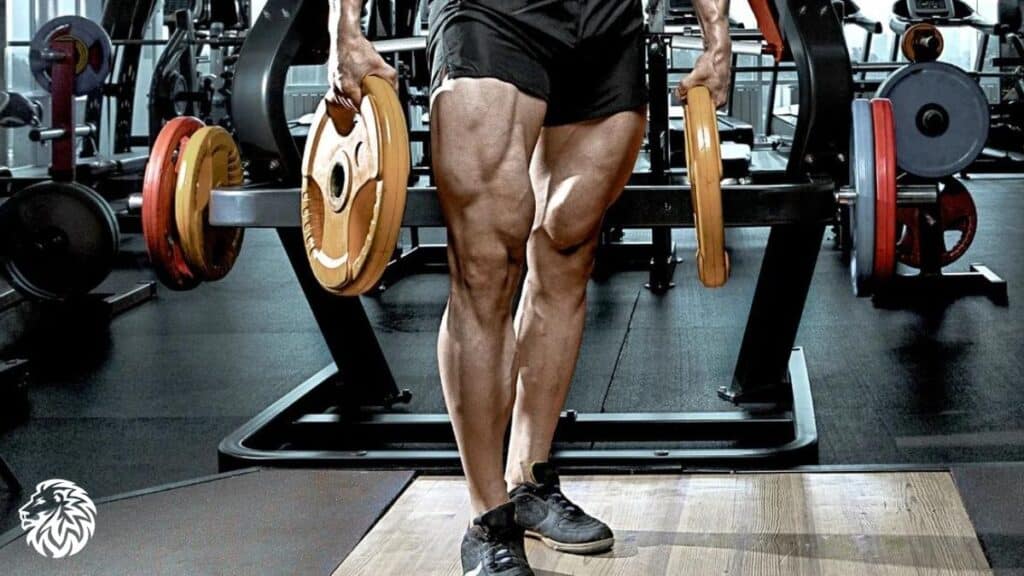
The quadriceps, as one of the most dominant muscle groups in the body, serve multiple purposes beyond the obvious role in locomotion. When all four muscles are trained equally and effectively, the benefits are multifaceted:
- Improved Athletic Performance
- Power and Speed: Strong quads are central to explosive movements like jumping, sprinting, and changing directions quickly. Whether you’re a basketball player aiming for a slam dunk or a sprinter dashing towards the finish line, well-developed quads provide the necessary power.
- Endurance: For long-distance runners, cyclists, or anyone involved in endurance sports, balanced quad muscles ensure consistent performance throughout the activity, reducing early fatigue.
- Enhanced Stability and Injury Prevention
- Joint Stability: The quads play a critical role in stabilizing the knee joint. A well-trained quadriceps group can better support the knee, reducing the risk of injuries like ACL tears or patellar tracking disorders.
- Balance and Coordination: With each quad muscle responsible for different aspects of leg movement, collectively they ensure fluidity and coordination, vital for tasks from simple walking to complex athletic maneuvers.
- Postural Benefits: Strong quads contribute to a better overall posture, especially in activities where the body’s weight is supported by the legs, such as standing or walking.
- Aesthetic Benefits for Bodybuilders and Fitness Enthusiasts
- Symmetry: In bodybuilding, muscular symmetry and balance are paramount. Working all quad muscles equally ensures that one doesn’t overshadow the others, leading to a proportionate leg appearance.
- Defined Look: Each quad muscle, when developed, contributes to the overall sculpted appearance of the leg. For instance, the vastus medialis gives the sought-after “teardrop” look near the knee.
- Clothing Fit: For many fitness enthusiasts, having well-developed quads can make certain clothing, like jeans or shorts, fit better and look more flattering.
Incorporating exercises that engage all four quad muscles ensures that we reap these comprehensive benefits, promoting both functional strength and an impressive physique.
Exercises to Target Each Muscle
Training the quadriceps comprehensively means implementing exercises that emphasize each of its four distinct muscles. By understanding which movements recruit which muscles most effectively, you can design a workout that ensures all parts of the quadriceps group receive attention.
Rectus Femoris
The unique aspect of the rectus femoris is that it crosses both the hip and knee joints. Thus, exercises that involve both hip flexion and knee extension can effectively target this muscle.
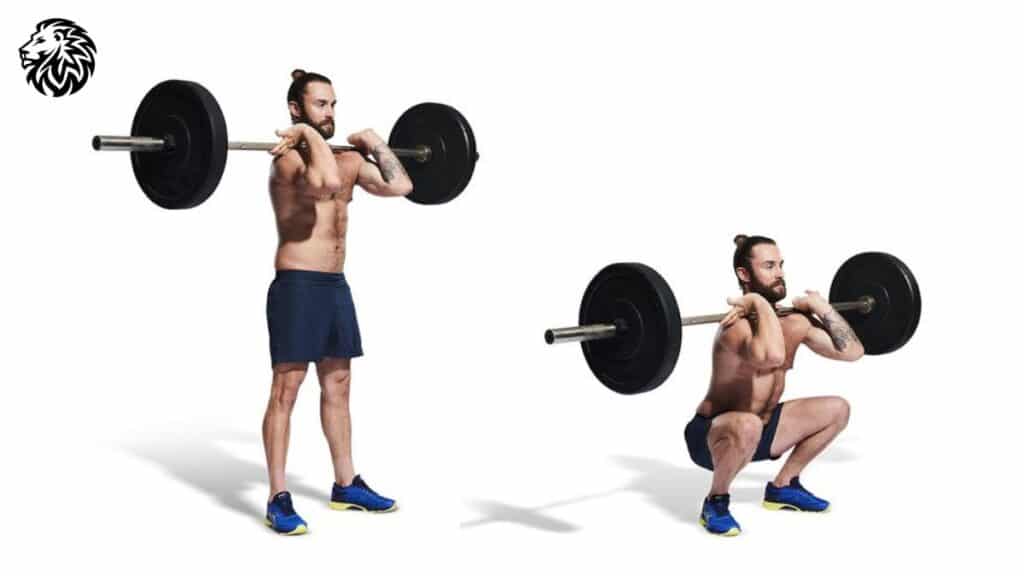
- Front Squats:
- How to: Begin with the barbell resting on the front of your shoulders, with your palms facing upward and elbows pointing forward. Keeping your chest up, descend into a squat by pushing your hips back and bending your knees. Press through your heels to return to the starting position.
- Why it works: The front squat position places more emphasis on the quads, especially the rectus femoris, compared to the back squat.
- Leg Extensions:
- How to: Using a leg extension machine, sit down and place your ankles behind the padded bar. Adjust the machine so the pad sits on the lowest part of the shins. Extend your legs fully, squeezing your quads at the top. Slowly return to the starting position.
- Why it works: This isolation exercise directly targets the rectus femoris due to the singular motion of knee extension.
Vastus Lateralis
This muscle runs along the outer side of the thigh and can be targeted effectively by exercises that require abduction or pushing the legs outward.

- Wide Stance Squats:
- How to: Start with your feet wider than shoulder-width apart, toes slightly turned out. Holding a barbell across your upper back, lower into a squat, ensuring your knees track over your toes. Drive through your heels to return to the start.
- Why it works: The wide stance emphasizes the vastus lateralis by recruiting the outer portion of the thighs.
- Leg Press with a Wider Foot Placement:
- How to: On a leg press machine, place your feet wider than hip-width apart and high on the platform. Press the weight up, unlocking the safety mechanism. Bend your knees and lower the weight until your thighs are parallel to the footplate. Push back to the starting position.
- Why it works: The wider foot placement on the leg press specifically emphasizes the vastus lateralis, allowing you to feel a strong contraction on the outer thighs.
Vastus Medialis (Teardrop muscle)
The vastus medialis, often called the “teardrop muscle” due to its shape, is located on the inner part of the thigh. Training this muscle not only enhances leg aesthetics but also provides crucial stability to the knee joint.
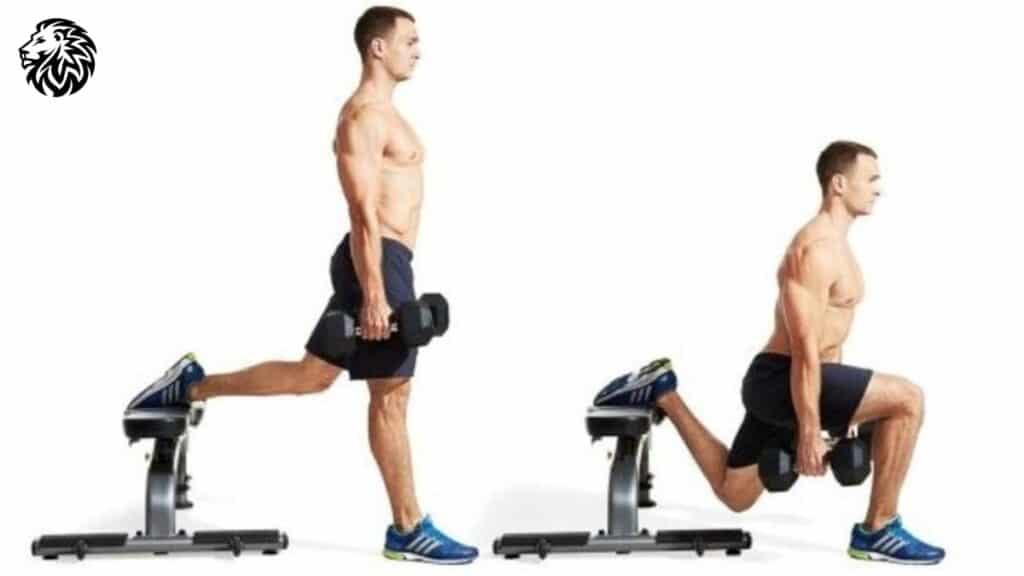
- Bulgarian Split Squats:
- How to: Stand a couple of feet away from a bench, facing away from it. Extend one leg back and place the top of your foot on the bench. With your chest up, lower into a lunge, ensuring your front knee is in line with your foot. Press through the heel of your front foot to return to the start.
- Why it works: This exercise places significant emphasis on the quads, especially the vastus medialis, due to the deep lunge position and the stabilizing role the muscle plays during the movement.
- Leg Extensions with Toes Pointed Inward:
- How to: Sit on a leg extension machine, placing your ankles behind the padded bar. Point your toes slightly inward. Extend your legs fully, squeezing the quads at the top. Slowly return to the starting position.
- Why it works: By pointing the toes inward, you emphasize the medial portion of the quad, targeting the vastus medialis more directly.
Vastus Intermedius
Located beneath the rectus femoris, the vastus intermedius is a deeper quad muscle. While it’s not visible like the other three, it plays an essential role in leg extension.
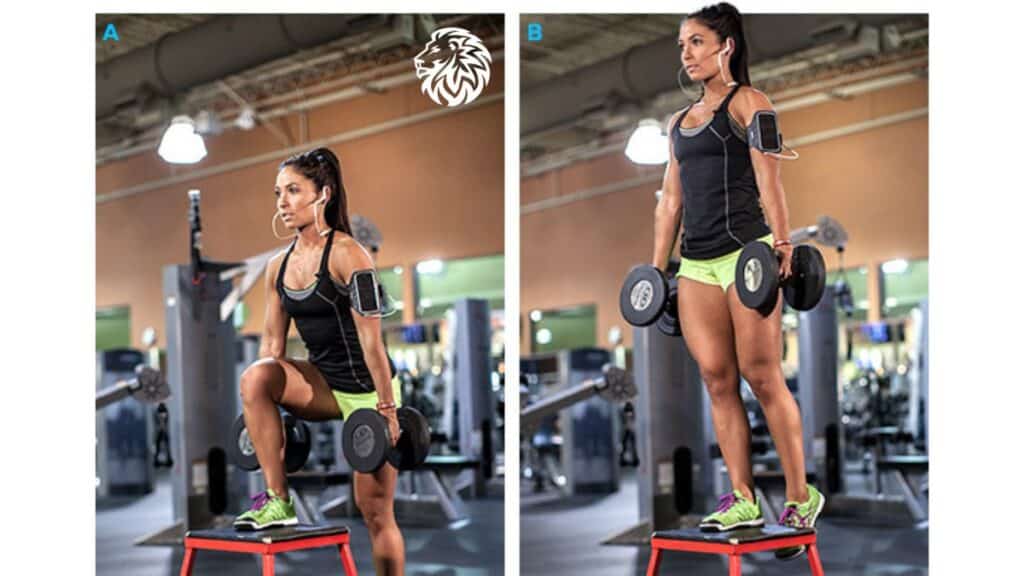
- Close Stance Squats:
- How to: Stand with your feet hip-width apart or slightly closer. Holding a barbell across your upper back, lower into a squat, keeping your knees close together and ensuring they don’t bow inward. Press through your heels to return to the start.
- Why it works: The close stance emphasizes the vastus intermedius due to the more direct alignment with the femur, leading to a stronger contraction of this deep muscle.
- Step-ups:
- How to: Holding dumbbells at your sides or with a barbell on your back, stand in front of a bench or platform. Step up onto the bench with one leg, pressing through the heel to bring your other leg up. Step back down and repeat on the other leg.
- Why it works: Step-ups involve both knee and hip extension, recruiting the vastus intermedius in the process of elevating the body.
Incorporating a variety of exercises targeting each of the four quad muscles ensures a comprehensive workout, leading to balanced strength, stability, and aesthetics.
Tips for Effective Quadriceps Training

Maximizing the benefits of quadriceps training requires more than just executing the right exercises; it also means adopting practices that promote safety, sustainability, and optimal growth. Here’s a comprehensive guide:
- Warm-up and Stretching:
- Importance: A proper warm-up increases blood flow to the muscles, preparing them for the stress of weight lifting. It also enhances joint mobility, reducing the risk of strains and injuries.
- Methods: Begin with 5-10 minutes of light cardio (like jogging or cycling) to elevate your heart rate. Follow this with dynamic stretches such as leg swings, walking lunges, and high knees. After your workout, use static stretches to increase flexibility and aid recovery, holding each stretch for 15-30 seconds.
- Proper Form and Technique to Prevent Injuries:
- Importance: Using the correct form ensures you’re targeting the intended muscle group effectively and prevents unnecessary strain on joints and other muscles.
- Tips: Maintain a neutral spine during exercises. Ensure your knees track in line with your toes during squats and lunges. Consider working with a personal trainer or utilizing mirrors to check and correct your form.
- The Role of Progressive Overload and Consistent Training:
- Importance: For muscles to grow and get stronger, they need to be continually challenged. Progressive overload ensures your muscles don’t adapt and plateau.
- Methods: Gradually increase the weight you’re lifting, the number of repetitions, or the overall volume of your workouts. Track your progress to ensure you’re consistently pushing yourself. Aim to train your quads 1-3 times a week depending on your goals and recovery capacity.
- Recovery: Importance of Rest and Nutrition:
- Rest:
- Importance: Muscles grow and repair during rest periods, not during the actual workout. Overtraining without adequate rest can lead to injuries and hinder progress.
- Tips: Ensure you get 48-72 hours of rest between intense quad-focused workouts. Listen to your body; if you’re feeling sore or fatigued, consider taking an extra rest day.
- Nutrition:
- Importance: Proper nutrition provides the building blocks for muscle repair and growth. It also replenishes energy stores, aiding overall recovery.
- Tips: Consume a balanced diet rich in protein, healthy fats, and carbohydrates. Post-workout, aim for a meal or snack that combines protein and carbs, like a protein shake with a banana, to optimize muscle recovery.
- Rest:
Incorporating these strategies will ensure that your quadriceps training is not only effective but also sustainable, setting you on a path to consistent progress and minimized injury risk.
Common Mistakes and How to Avoid Them
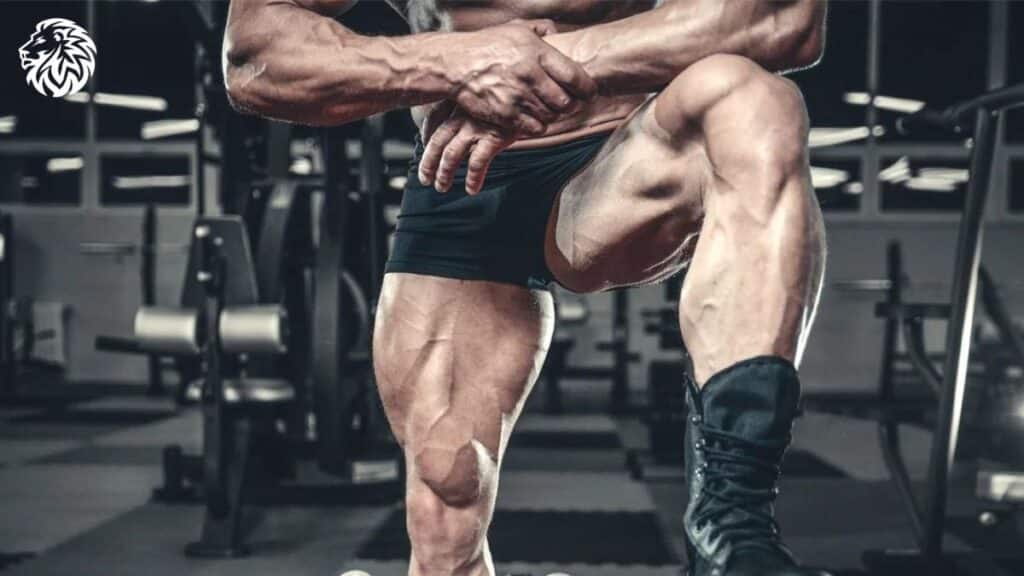
Training the quadriceps effectively requires not only dedication and hard work but also knowledge of potential pitfalls. Recognizing common mistakes and learning how to sidestep them can optimize results and minimize setbacks.
- Avoiding Overtraining: Signs and Symptoms
- Common Mistake: Pushing too hard and too frequently without giving muscles adequate time to recover can lead to overtraining.
- Signs of Overtraining: Persistent soreness, decreased performance or strength, increased susceptibility to injuries, insomnia, irritability, elevated resting heart rate, and frequent illnesses.
- How to Avoid: Listen to your body. Incorporate rest days and ensure you’re getting sufficient sleep. If you notice signs of overtraining, consider taking a deload week where you reduce intensity and volume to allow the body to recover.
- Importance of Balanced Leg Training (Not Neglecting Hamstrings)
- Common Mistake: While the quadriceps are crucial, solely focusing on them and ignoring the hamstrings can lead to muscular imbalances and potential injuries.
- Consequences: An imbalance between the quads and hamstrings can increase the risk of injuries like ACL tears. It also affects the overall aesthetic and functional balance of the legs.
- How to Avoid: Incorporate hamstring-focused exercises like Romanian deadlifts, hamstring curls, and glute-ham raises into your routine. Aim for a balanced ratio in training volume between the quads and hamstrings.
- Not Diversifying Exercises
- Common Mistake: Sticking to the same exercises or routine for extended periods without variation.
- Consequences: The muscles can adapt to the same stimulus over time, leading to plateaus in strength and muscle growth. Repetitive movements can also increase the risk of overuse injuries.
- How to Avoid: Introduce variety in your workouts. Change up the exercises, sets, reps, and weights every few weeks. Incorporate both compound and isolation exercises to challenge the quads from different angles and intensities.
By being aware of these common mistakes and actively working to avoid them, you can ensure a more effective, balanced, and injury-free approach to quadriceps training.
Conclusion
The quadriceps, comprising four distinct muscles, play a pivotal role in our daily movements and athletic endeavors. As we’ve delved into, a comprehensive quad workout is essential not just for those seeking sculpted legs but also for anyone aiming for overall functional fitness and injury prevention. By targeting each muscle within this group, we ensure balanced leg development and optimal performance.
However, as with any fitness journey, it’s not just about the exercises we choose but also how we approach them. Avoiding common pitfalls, recognizing the signs of overtraining, and understanding the importance of a balanced leg routine can all make the difference between effective growth and potential setbacks.
In the pursuit of stronger and more defined legs, diversifying your exercises is key. It challenges the muscles in varied ways, leading to more holistic development. So, as you step into the gym or embark on your next home workout, remember to incorporate a mix of movements, focus on both the quads and hamstrings, and always prioritize form and recovery. Your legs, in their full strength and glory, will thank you for it.







